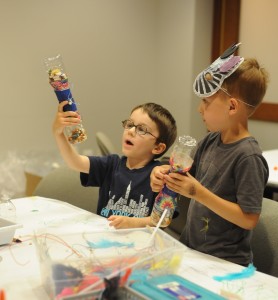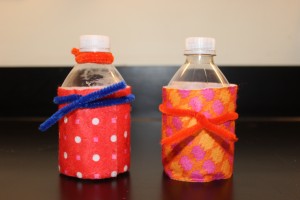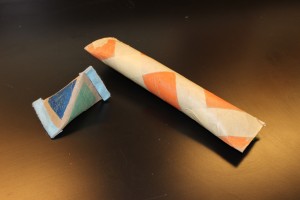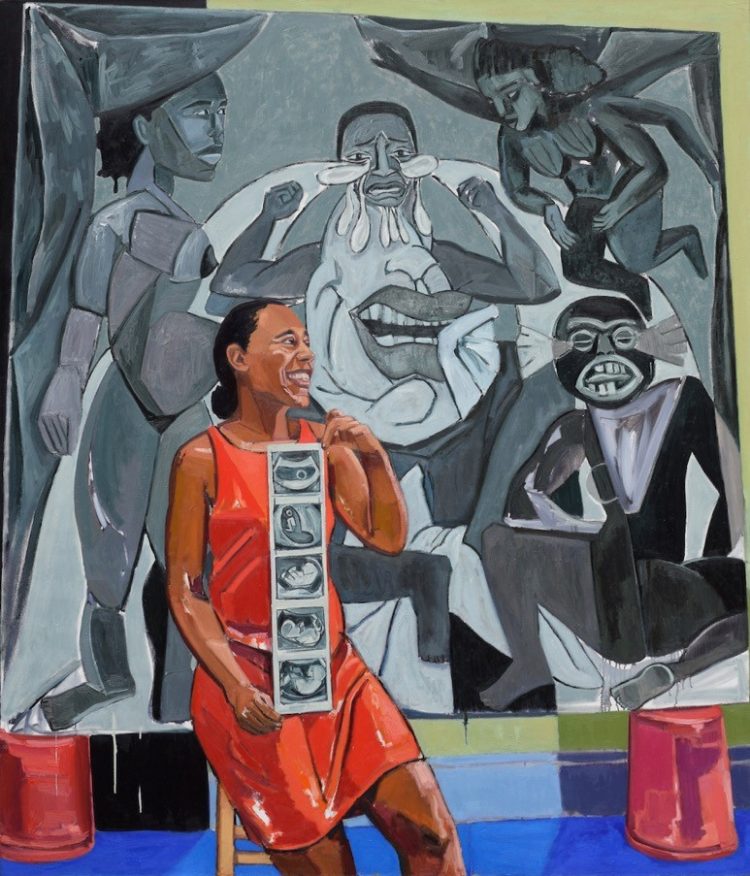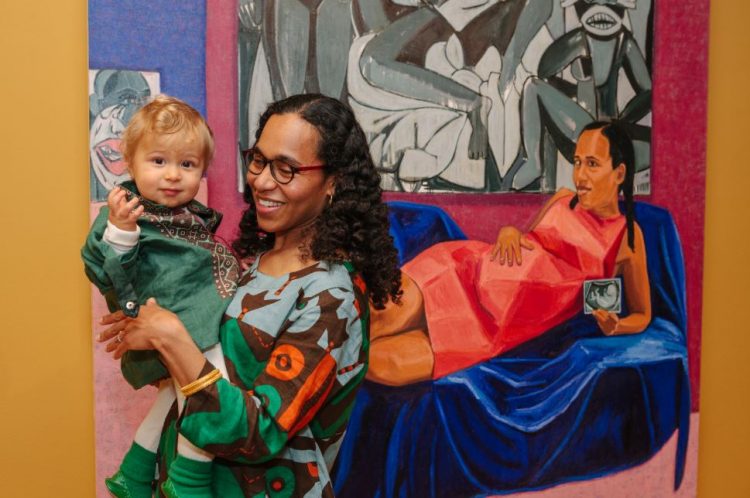Jordan Chambers, one of our inaugural Sherman Fairchild Fellows at The Phillips Collection, tells us about her fellowship capstone project, “Meditation in the Galleries.” The first event was held on February 20. The remaining two events, scheduled for March 19 and April 16, have been postponed until further notice. In the meantime, head to the Phillips’s Instagram for some #MuseumMomentsofZen and stay tuned for additional ways to connect art and wellness.
For my fellowship capstone, I designed a project that relates to The Phillips Collection’s art and wellness initiatives. My own interests and research investigate how museum spaces and galleries can promote socially inclusive atmospheres that bolster well-being among different populations in a community. My goals for this program are to offer direct well-being benefits and new experiences for our visitors; therefore, I constructed a “Meditation in the Galleries” experience. After thorough research on existing mindfulness programs in the DC area, the need for programming of this type was apparent. Collaborating with Donna Jonte, Manager of Art & Wellness and Family Programs, I launched “Meditation in the Galleries” in February 2020.
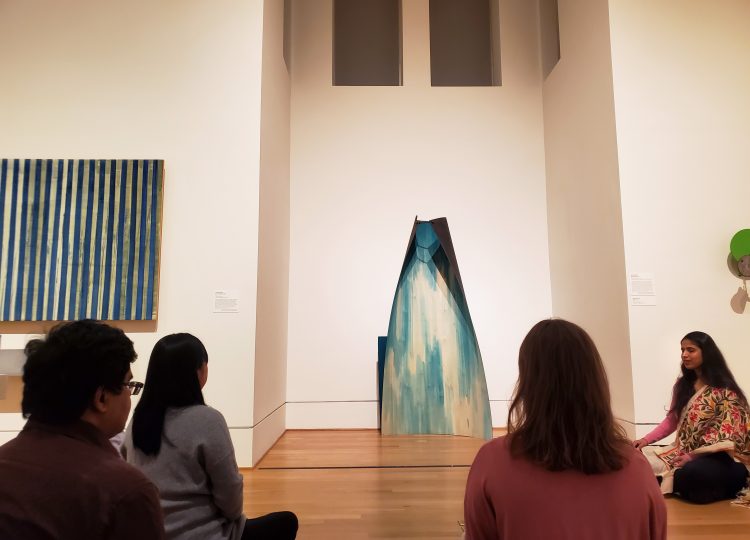
Meditation in the Galleries, February 2020
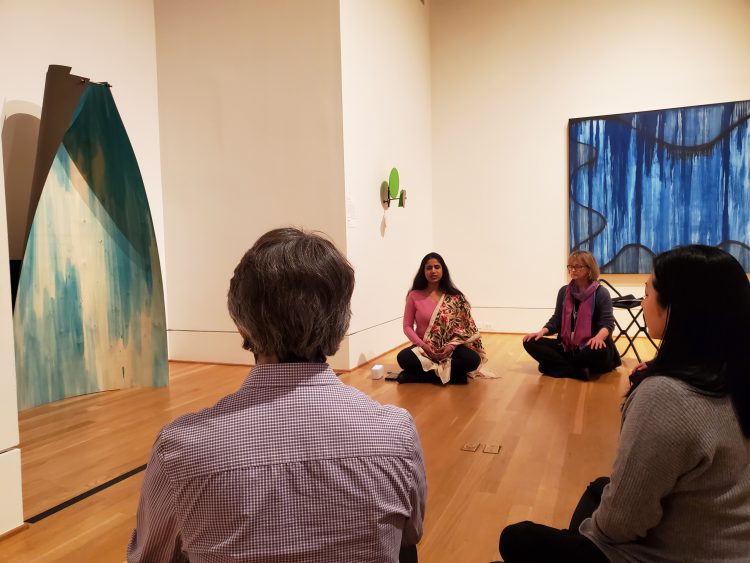
Meditation in the Galleries, February 2020
Mindfulness Meditation helps individuals slow down and focus, while increasing self-awareness and reducing stress. Living and working in DC can be hectic; meditation can offer us new perspectives and skills, a way to navigate the stresses of everyday life by connecting to the here and now. Aparna Sadananda, The Phillips Collection’s resident yoga instructor and meditation guide, thinks of mindfulness “as a practice of living each moment in a more embodied manner. When we are mindful, we are able to step out of the autopilot mode and observe the worlds within and out just as they are. This facilitates actions, born out of awareness of choices available and choosing that which is most purposeful. This could be empowering as well as relaxing while also priming us to tune into creativity, intuition, and artistic expression of ourselves.”
The pilot for “Meditation in the Galleries” consists of three 30-minute sessions that are divided between meditation and discussion, to be held on February 20, March 19, and April 16. The February program took place in the exhibition Moira Dryer: Back in Business (on view through April 19, 2020). Moira Dryer (1957–1992) was an artist from the 1980s and early ‘90s who had worked as a set designer for the Mabou Mines theater company. She stated that “the paintings are the performers. It’s really up to the audience at that point to say what the specific production is. The pieces evolve from a very personal, emotional point, but then they become entities in themselves. I give them life and then they become their own.”
The meditation sessions are guided, immersive experiences with a meditation teacher and a museum educator, during which participants connect mind and body while exploring artwork. February’s intimate group of six participants first looked closely at Dryer’s art and shared their initial thoughts with a neighbor. Led by Aparna, the group meditated, learning to destress, relax, and embrace the moment. We closed the session with reflection, sharing our new insights and questions about the artwork. Participants learned and practiced techniques for mindful looking and thinking that they can carry with them into their lives outside the museum.
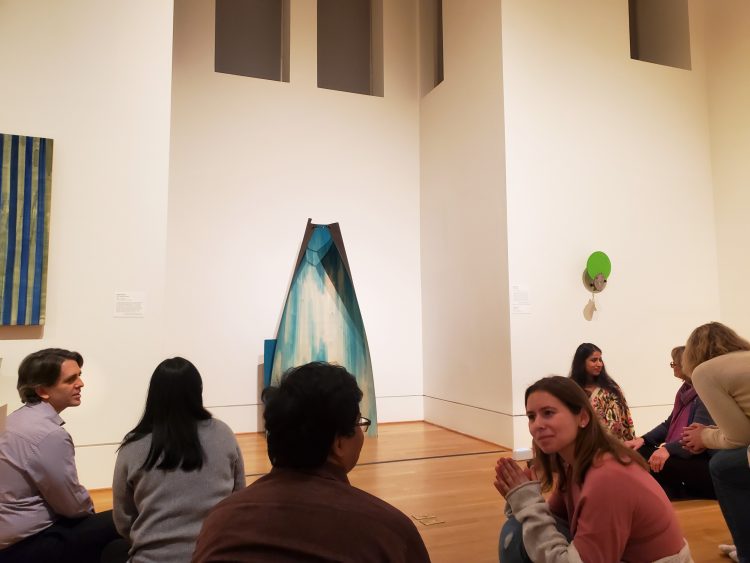
Meditation in the Galleries, February 2020
“Meditation in the Galleries” builds on The Phillips Collection’s Contemplation Audio Tour and reflects the museum’s institutional goal of promoting wellness through art. Donna Jonte reminds us that “founder Duncan Phillips opened his house as a museum in 1921 determined to create a collection of art that would be a ‘joy-giving, life-enhancing influence’ for viewers. This is our vision for meditation in the gallery: we want to engage visitors with art to promote wellness, enhance life, and bring joy. Through mindful looking at art, meditating while focused on art, and reflecting on this experience, we hope that participants will connect deeply to self, community, and the world.”
Developing, documenting, and participating in this program has been an extremely positive experience that I will take with me into my museum career. I hope that “Meditation in the Galleries” will continue as part of the permanent programming at The Phillips Collection and Phillips@THEARC.

